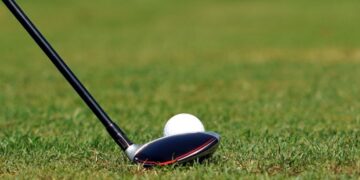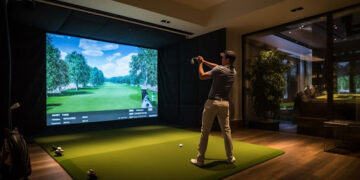Protective padding is a no-brainer in any sport involving potential body contact. This type of equipment usually consists of foam padding fastened to hard plastic outer shells.
So how to prevent concussions in sports? Helmets have been shown to decrease skull fractures and severe traumatic brain injury. They do this by absorbing and compressing the energy of collisions, thus decreasing both the impact force and the head’s acceleration.
Helmets
There is no doubt that helmets decrease the likelihood of severe TBI after impact, especially concussions. This is why sports like football and cycling have specific types of helmets; they are designed to protect the head from the kinds of impacts that those sports may see.
The protective features of a helmet can vary by sport and athlete, but most have at least a comfort liner, an energy-attenuating layer, and a shell. A comfortable liner reduces noise and wicks away moisture, while a solid shell can disperse or absorb the impact energy. Some helmets also have a retention system (aka the chin strap) held securely by two d-rings.
Helmets have been designed to largely reduce rotational forces, which can be more damaging than linear force, by dispersing or absorbing the impact energy in the brain. Some companies has designed a helmet with neurosurgeons, concussion experts, and former NFL team physicians as advisors, aiming to lessen rotational injuries by reducing rapid deceleration.
It is important to note that while new designs of headgear are helping to prevent concussions, they are not stopping CTE. This neurodegenerative disease results from cumulative hits, not just the singular ones that cause concussions. CTE is not yet curable, but researchers are working to prevent it by limiting contact, encouraging neck strengthening exercises, and minimizing high-risk impact sports.
Mouth Guards
Mouth guards are protective covers that fit over the upper teeth. They are used in sports to protect the teeth, gums, and tongue from injuries. They can also help to prevent jaw injuries and concussions. A mouthguard is also helpful for patients suffering from teeth grinding (bruxism), sleep apnea, and other dental procedures.
There is no evidence to support the old hypothesis that mouthguards may shield athletes against concussions by lessening the amount of stress absorbed by the teeth and jaw. However, mouthguards can shield the teeth and mouth from harm and are a must for any athlete who competes in a sport with a high risk of head trauma.
Stock mouth protectors, which can be bought at most sporting goods stores, are usually ill-fitting and offer little protection. Boil and bite mouth guards, made from a thermoplastic material that is dropped in hot water to soften before being placed in the mouth and molded to the teeth with the fingers and tongue, are more comfortable and often provide a better fit than stock mouthguards.
Mouthguards should be replaced when they show signs of wear or are ill-fitting. Teens and children should replace their mouthguards more often than adults because their mouths are still growing, which can cause the mouthguard not to fit properly.
Elbow Pads
Elbow pads are protective padded gear worn on the elbows to protect players from severe injuries caused by falls or strikes. They can also help prevent abrasions on the elbow. They can be found in different shapes and sizes to suit players’ needs. They can be worn alone or combined with knee pads to provide a complete set of protective equipment.
The type of elbow pad a player chooses will depend on their position and style of play. For example, a winger might want a pair of slim elbow pads that offer maximum mobility and agility. At the same time, a defenseman might prefer more advanced pads designed for physical play around the boards. Elbow pads need to fit correctly. If they are too tight, they can restrict the elbow’s range of motion and limit blood flow. They should be comfortable enough to wear for long periods. They can stay upright when playing and are less effective if they are tight enough.
The best elbow pads are lightweight, flexible, and have a high-quality shock-absorbent padding foam that is contoured to the shape of the elbow. They should also have a high-strength, ballistic nylon outer shell with double stitching for durability. They should also have a wide, reinforced elastic strap to ensure a secure fit. In addition, they should have a hard plastic cap that is lightweight and strong.
Shoulder Pads
Aside from helmets, shoulder pads are one of football players’ most important protective gear. They are designed to absorb blows to a player’s shoulders and protect the neck. The pads can also help prevent concussions by distributing impact forces to multiple body areas.
Gone are the days of enormous pads that cantilevered from the shoulders and seemed to engulf a player like a treehouse for his head. Instead, NFL players now wear streamlined pads that offer the same level of protection with less bulk.
Several factors have contributed to this shift, including advances in the technology of plastic and foam harnesses, a change in linemen’s blocking technique to allow more freedom of movement for players and a move by some teams toward using lighter equipment. The smaller pads are also more comfortable, making it easier for players to move with the ball and defend against tackles.
In the last few years, some teams have experimented with newer shoulder pads to see if they can reduce the number of collisions and injuries. While the research is ongoing, some brands have successfully reduced the amount of force that comes into contact with a player’s body. Read more interesting articles on Tech new master



















